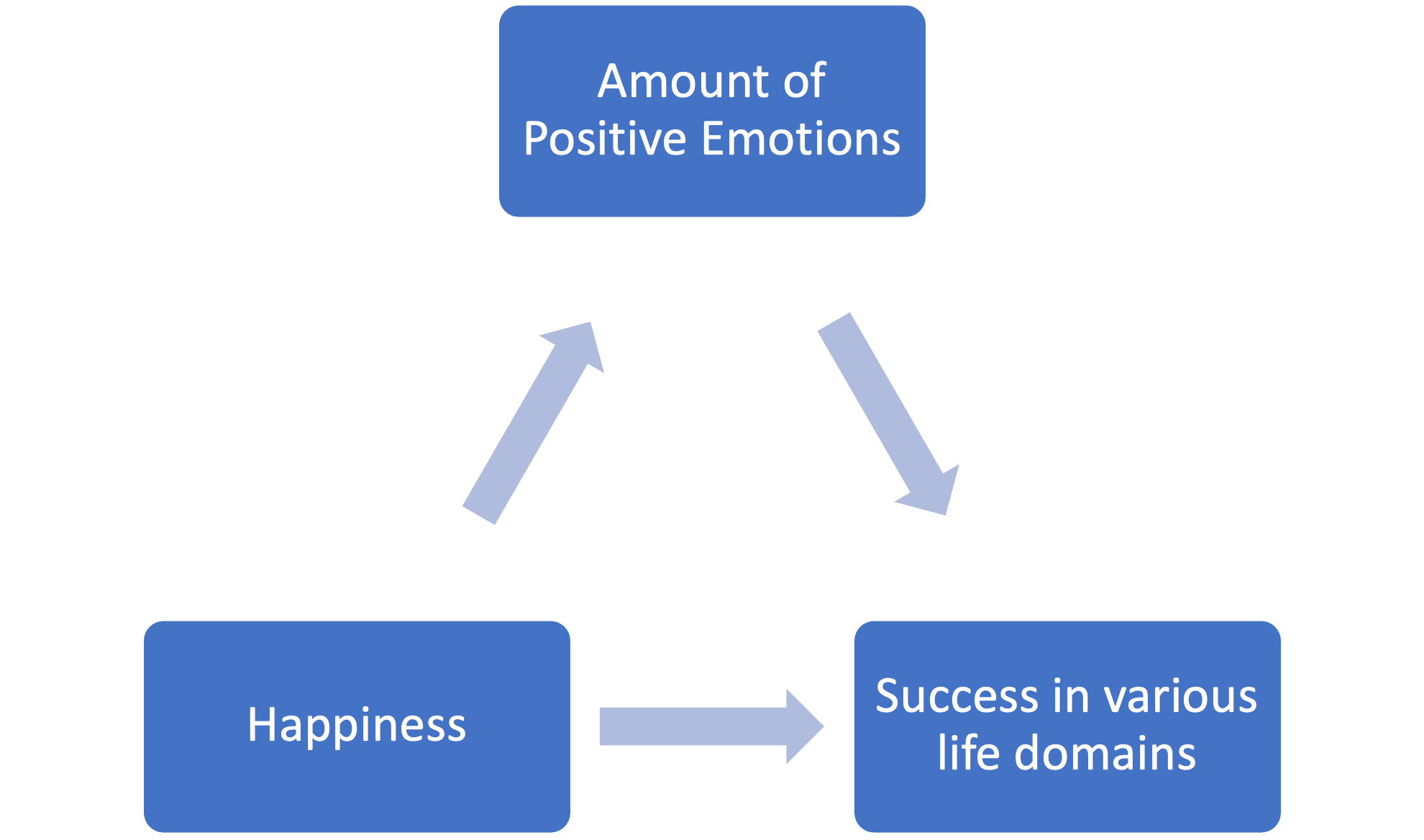Chapter 13: Positive Emotions
Positive Emotions and Happiness
One of Ekman’s primary, universal emotions is happiness. But, happiness researchers (e.g., Fredrickson) claim that happiness is not a basic emotion, but a personality trait. Viewing happiness as a personality trait means people’s level of happiness is relatively stable over time and across situations. Some people are generally happy, while others are not. Happiness is a stable, heritable, long-term measure of a person’s well-being. For most emotion researchers, joy is the distinct positive emotion. So, how are positive emotions, like joy, different from the trait happiness? First, unlike positive emotions, happiness does not occur in response to a specific event.
Remember, that Fredrickson has identified 10 positive, basic emotions. According to hers and other works (for a review, Lyubomirsky et al., 2005) , experiencing 10 positive basic emotions on a frequent, daily basis is associated with happiness. In fact, Lyubomirksy et al.’s (2005) detailed meta-analysis found that happiness causes several successful outcomes in work, relationships, thinking, coping, etc., and that the relationship between happiness and life success is mediated by the experience of positive emotions (Figure 35). So why are happy people often more successful in a variety of life domains? Because they experience more positive emotions! This fits with the hedonic view of happiness – which suggests that happiness is caused by the experience of many positive emotions and few negative emotions. The other view of happiness is called eudaimonic – we are happy when we feel that our life has purpose and when we achieve goals.
Figure 35
Amount of Positive Emotions Mediates the Relationship between Happiness and Life Success

So, based on the hedonic view of happiness, over time we can increase our happiness by experiencing more positive emotions. Below is a list of positive emotions. What are some interventions we might use to help people experience more positive emotions? Remember, according to the broaden-and-build theory, it doesn’t matter which positive emotion we experience! All that matters is that we frequently experience positive emotions.
Joy, interest, contentment, gratitude, awe, amusement, inspiration, pride, hope, love

